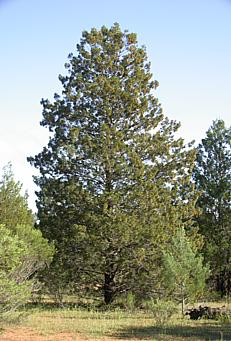Callitris
| Cypress-pine | |
|---|---|
 |
|
| Callitris preissii | |
| Scientific classification | |
| Kingdom: | Plantae |
| Division: | Pinophyta |
| Class: | Pinopsida |
| Order: | Pinales |
| Family: | Cupressaceae |
| Subfamily: | Callitroideae |
| Genus: |
Callitris Vent. |
| Synonyms | |
|
|
Callitris is a genus of coniferous trees in the Cupressaceae (cypress family). There are 16 recognised species in the genus, of which 13 are native to Australia and the other three (C. neocaledonica, C. sulcata) native to New Caledonia. Traditionally, the most widely used common name is cypress-pine, a name shared by some species of the closely related genus Actinostrobus.
They are small to medium-sized trees or large shrubs, reaching 5–25 m (16–82 ft) tall (to 40 m (130 ft) in C. macleayana). The leaves are evergreen and scale-like, except for on young seedlings, where they are needle-like; in C. macleayana, needle-like leaves are found mixed with scale leaves throughout the tree's life. The scales are arranged in six rows along the twigs, in alternating whorls of three (often in whorls of four in C. macleayana).
The male cones are small, 3–6 mm (0.12–0.24 in) long, and are located at the tips of the twigs. The female cones start out similarly inconspicuous, maturing in 18–20 months to 1–3 cm (0.39–1.18 in) long and wide, globular to ovoid (acute in C. macleayana), with six overlapping, thick, woody scales, arranged in two whorls of three (often 8 scales in C. macleayana). The cones remain closed on the trees for many years, opening only after being scorched by a bushfire; this then releases the seeds to grow on the newly cleared burnt ground.
The genus is divided into two sections, with the atypical C. macleayana in sect. Octoclinis, and all the other species in sect. Callitris. Some botanists treat C. macleayana in a separate genus, as Octoclinis macleayana. C. macleayana is also distinct in occurring in rainforest on the east coast of Australia; the other species all grow on dry sites.
The closest relatives of Callitris are Actinostrobus from southwest Western Australia, which differs in its cones having several basal whorls of small sterile scales. A 2010 study of Actinostrobus and Callitris places the three species of Actinostrobus within an expanded Callitris based on analysis of 42 morphological and anatomical characters.
...
Wikipedia
